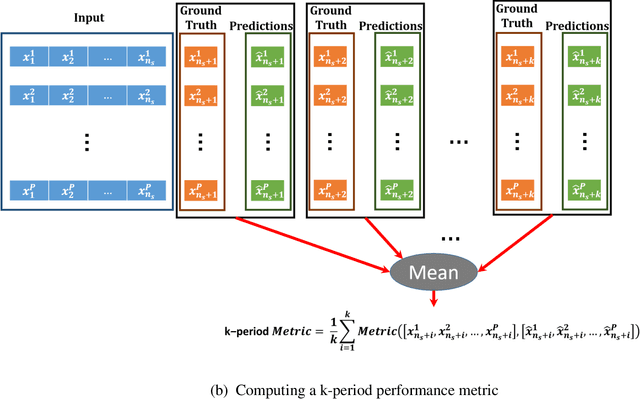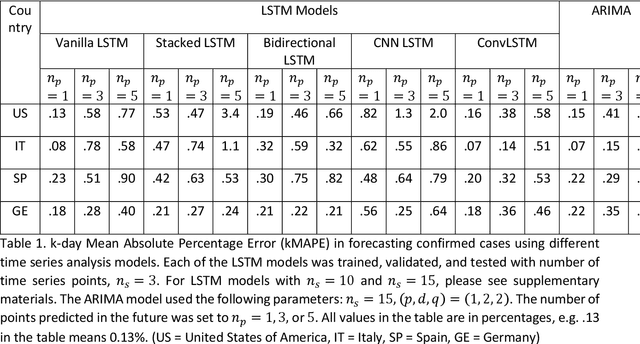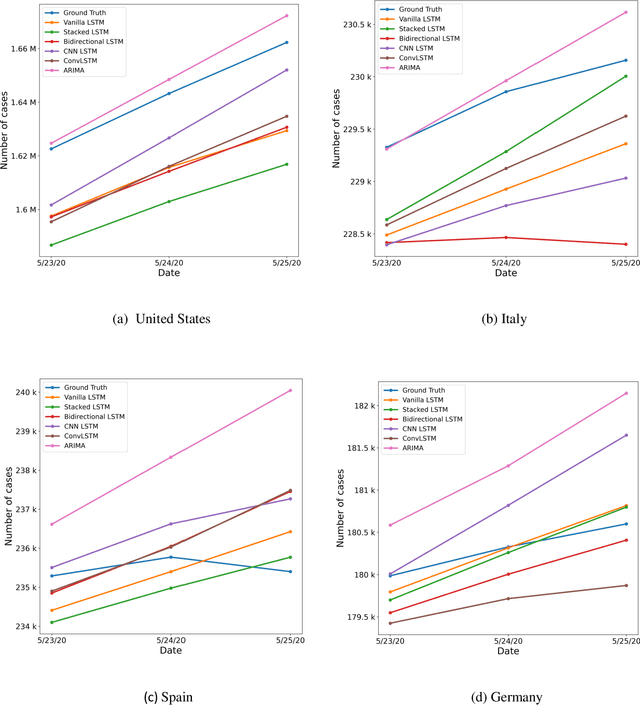Time Series Analysis and Forecasting of COVID-19 Cases Using LSTM and ARIMA Models
Paper and Code
Jun 05, 2020



Coronavirus disease 2019 (COVID-19) is a global public health crisis that has been declared a pandemic by World Health Organization. Forecasting country-wise COVID-19 cases is necessary to help policymakers and healthcare providers prepare for the future. This study explores the performance of several Long Short-Term Memory (LSTM) models and Auto-Regressive Integrated Moving Average (ARIMA) model in forecasting the number of confirmed COVID-19 cases. Time series of daily cumulative COVID-19 cases were used for generating 1-day, 3-day, and 5-day forecasts using several LSTM models and ARIMA. Two novel k-period performance metrics - k-day Mean Absolute Percentage Error (kMAPE) and k-day Median Symmetric Accuracy (kMdSA) - were developed for evaluating the performance of the models in forecasting time series values for multiple days. Errors in prediction using kMAPE and kMdSA for LSTM models were both as low as 0.05%, while those for ARIMA were 0.07% and 0.06% respectively. LSTM models slightly underestimated while ARIMA slightly overestimated the numbers in the forecasts. The performance of LSTM models is comparable to ARIMA in forecasting COVID-19 cases. While ARIMA requires longer sequences, LSTMs can perform reasonably well with sequence sizes as small as 3. However, LSTMs require a large number of training samples. Further, the development of k-period performance metrics proposed is likely to be useful for performance evaluation of time series models in predicting multiple periods. Based on the k-period performance metrics proposed, both LSTMs and ARIMA are useful for time series analysis and forecasting for COVID-19.
 Add to Chrome
Add to Chrome Add to Firefox
Add to Firefox Add to Edge
Add to Edge